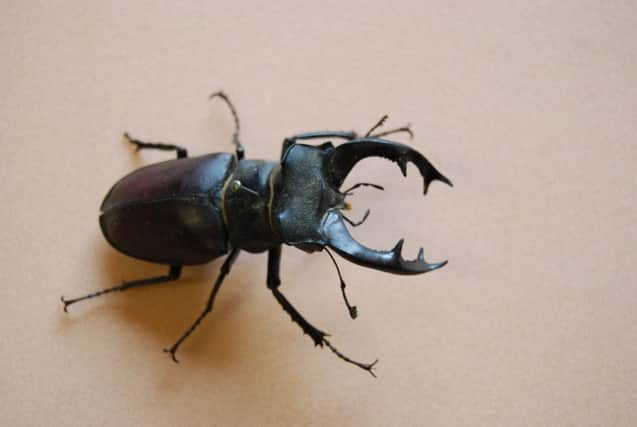Time to lock horns with this rare beetle


JUNE is the time of year when stag beetles (Lucanus cervus) are likely to be seen, as warmer evenings draw them above ground to find a mate and reproduce.
However, despite being Britain’s largest land beetle, they are also one of this country’s rarest.
Advertisement
Hide AdAdvertisement
Hide AdGardeners can do much to make their green spaces a haven for stag beetles, to help reverse the decline of this insect.
Stag beetles can reach up to 75mm in size, which makes them second largest of all UK beetles (after the great diving beetle), but also easy to spot.
Typically, stag beetles live in Britain’s gardens, parks, woodland edges and traditional orchards, and are prevalent throughout southern England.
However, they are less common in the north and, because of the chalky soil, are absent from the South Downs.
Advertisement
Hide AdAdvertisement
Hide AdLaura Bower, the conservation officer at PTES, says: ‘Sadly stag beetles are declining across Europe and they’re now extinct in some countries.
‘In the southern parts of the UK they are doing much better but they still need our help.’
She adds: ‘Gardens are important habitats, as stag beetle larvae rely on decaying wood in contact with soil to feed on.
‘Gardeners can help by retaining dead tree stumps or building a log pile. We hope to combat any further decline by asking the public to make their gardens more suitable for stag beetles.’
Advertisement
Hide AdAdvertisement
Hide AdPeople can also help by recording stag beetle sightings in PTES’ annual Great Stag Hunt, which has been running for nearly 20 years.
Last year there were more than 6,000 submitted records, the highest number on record since the survey began in 1998.
This is what you can do to help save this rarity:
• One of the major problems facing stag beetles is a lack of rotting wood to lay eggs in or near, and for larvae to feed on. A log pile provides stag beetles with a habitat for the future. Log piles are also great for other invertebrates and they in turn provide food for hedgehogs and birds.
• Leave old stumps and dead wood alone as these provide the perfect habitat and a food supply. If you want to make stumps more attractive, try growing a climbing plant up it.
Advertisement
Hide AdAdvertisement
Hide Ad• Be vigilant when mowing your lawn and be alert for predators. Try to scare away magpies and keep your own pets indoors during warm evenings when stag beetles fly. If you see a dead-looking beetle in water, take it out – they often revive.
Visit ptes.org/gsh to tell PTES about your sightings, which will help the charity’s wider conservation strategy.